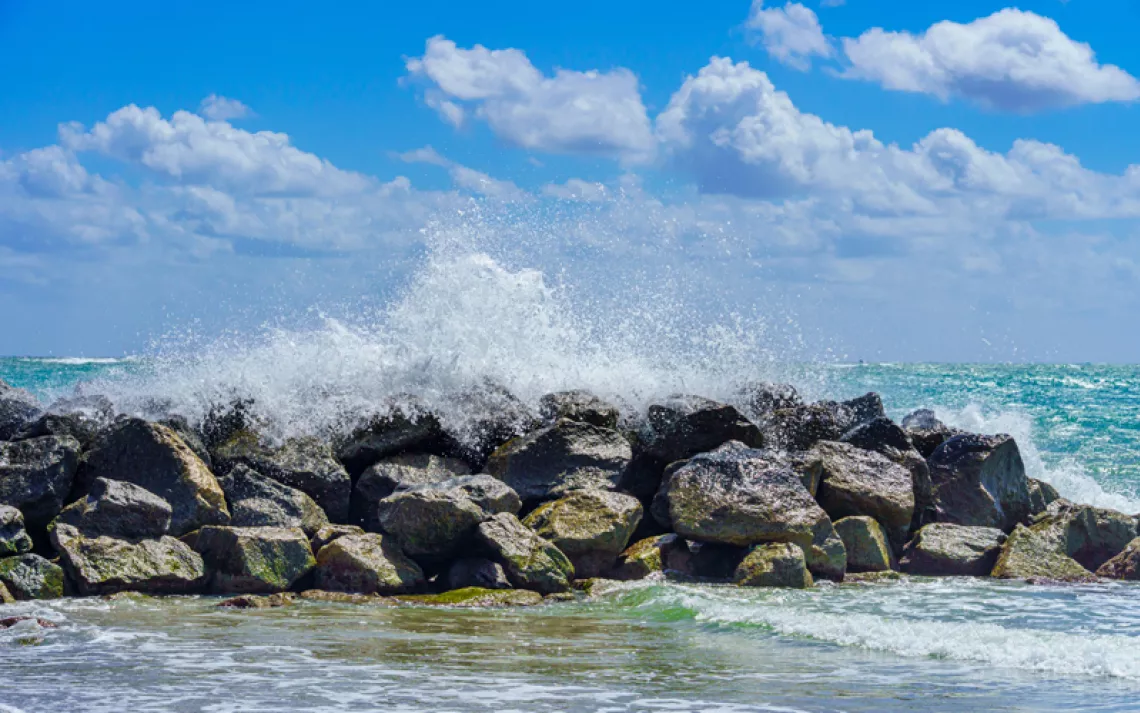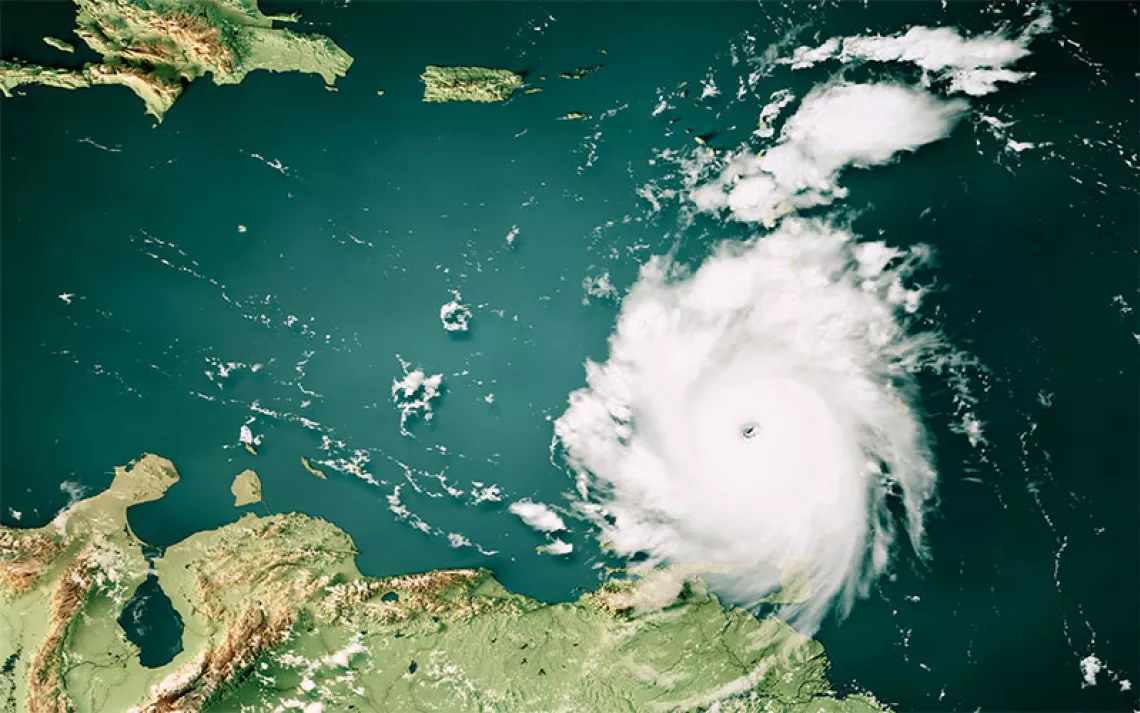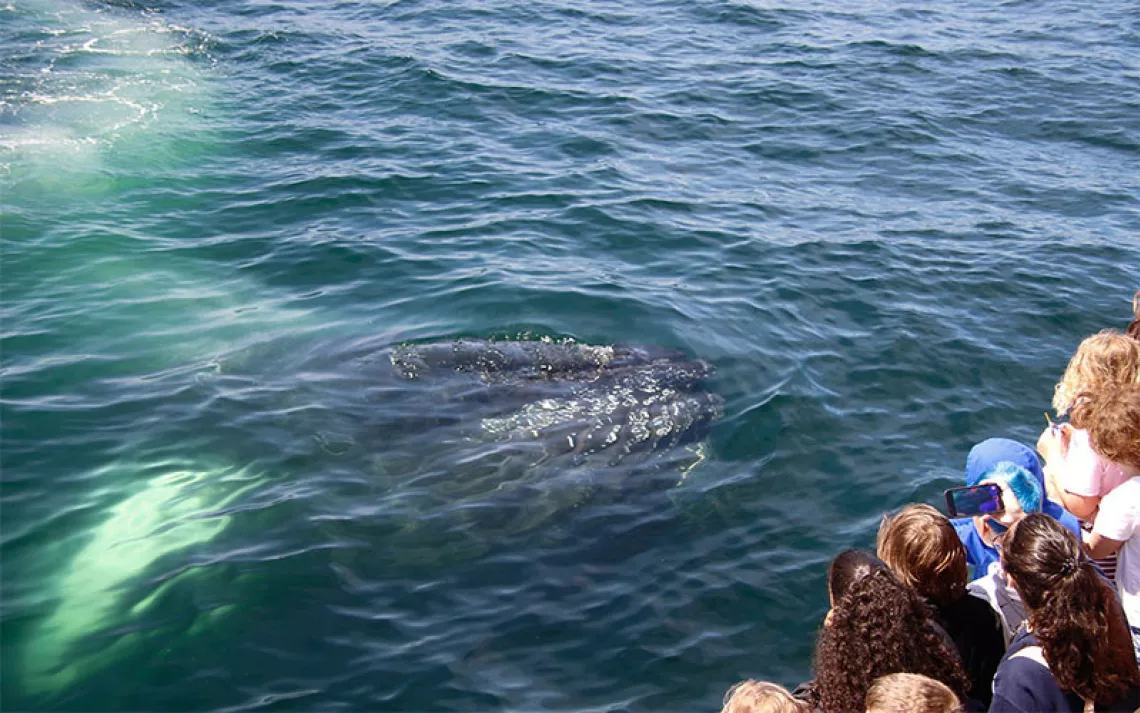Sailing Aboard a Historic Maine Windjammer
One writer’s wind-powered exploration of Penobscot Bay
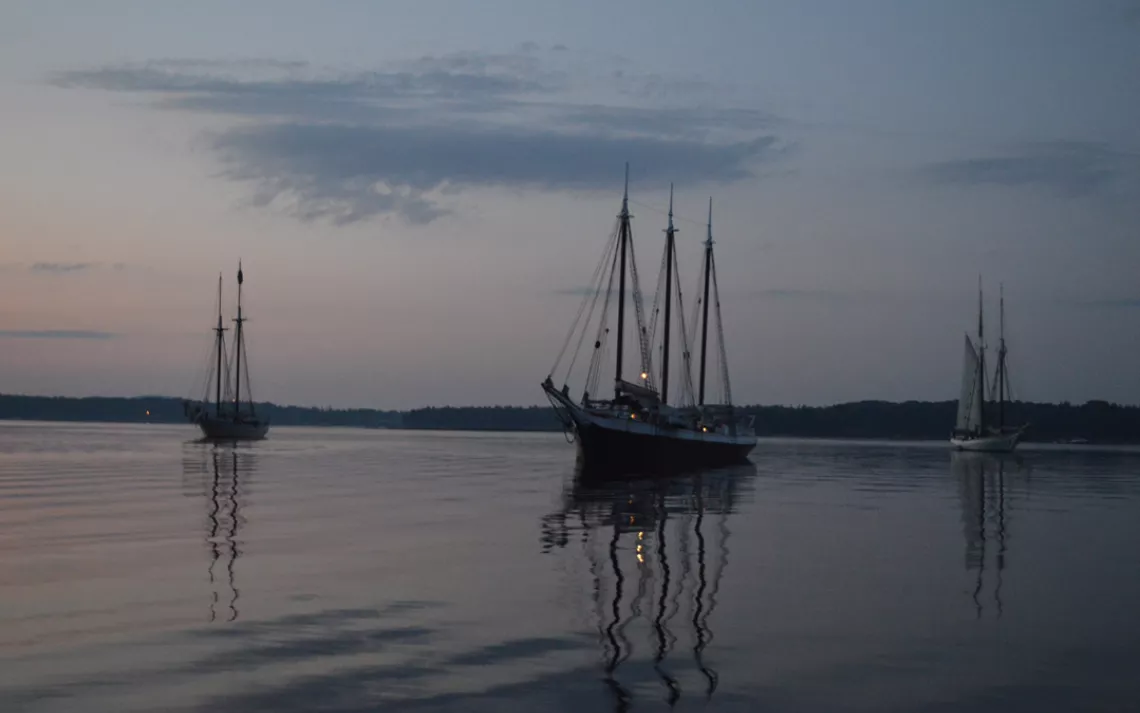
Photos by Gina Vercesi
Last summer, I ventured to Maine’s mid-coast for a sail vacation aboard the Schooner Isaac H. Evans, one of the vessels in North America’s largest fleet of historic windjammers. A windjammer is a large merchant sailing ship, marked by tall masts and square sails. In the 19th and early 20th centuries, windjammers ferried bulk cargo, such as lumber or grain, between continents. Several of these grand ships are still in existence, operating as schools, museums, restaurants, and, as I experienced, rustic cruise ships. My daughters and I set sail on a four-night knitting cruise through the Penobscot Bay. Days were spent lounging on the schooner’s lacquered wooden deck with a book, sketchpad, or, in our case, knitting needles and skeins of colorful yarn, all while enjoying Maine’s natural beauty. The adventure wasn’t all turning fibers into colorways though—here are some windjamming pro tips, as well as my personal highlights.
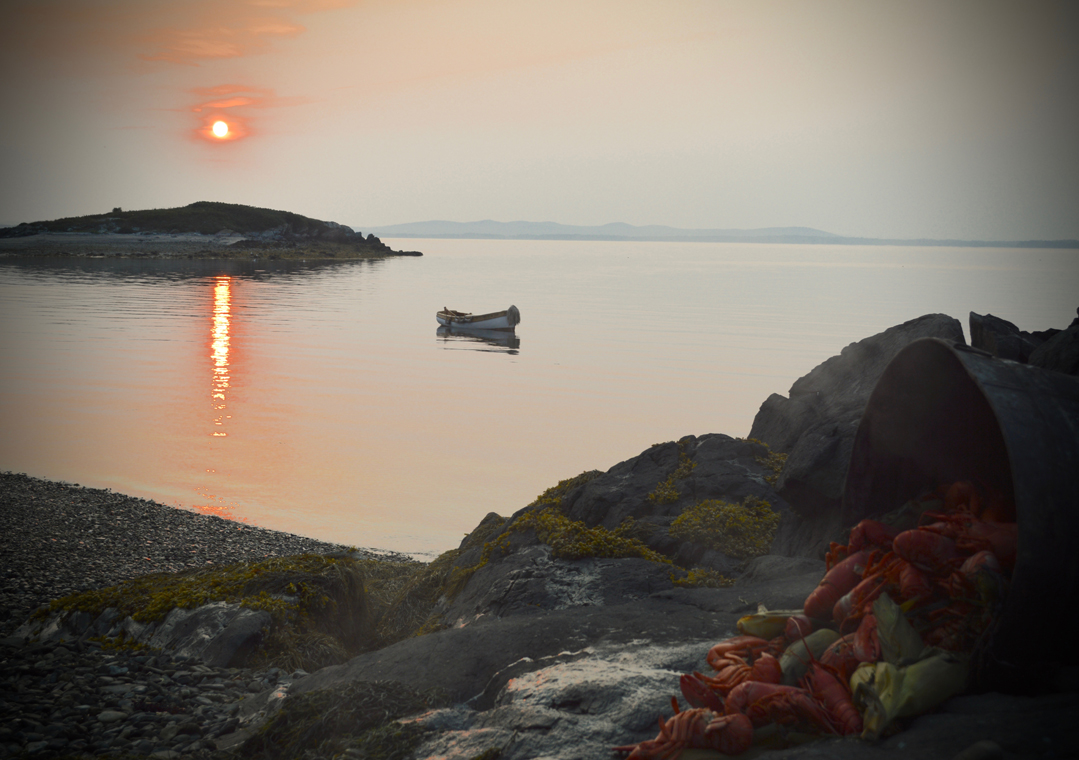 Getting There: All vessels in the Maine Windjammer fleet sail from picturesque harbors in Camden or Rockland, Maine, about two hours north of Portland. Guests flying into Portland or Bangor can call Schooner Bay Taxi to arrange an airport greeting and windjammer delivery. Roadtrippers traveling north along Route 1 have myriad detour opportunities—several idyllic, mid-coast Maine towns pave the way. And since most boarding calls are for late afternoon, there’s plenty of time to grab a lobster roll for lunch.
Getting There: All vessels in the Maine Windjammer fleet sail from picturesque harbors in Camden or Rockland, Maine, about two hours north of Portland. Guests flying into Portland or Bangor can call Schooner Bay Taxi to arrange an airport greeting and windjammer delivery. Roadtrippers traveling north along Route 1 have myriad detour opportunities—several idyllic, mid-coast Maine towns pave the way. And since most boarding calls are for late afternoon, there’s plenty of time to grab a lobster roll for lunch.
Best Moment: Every cruise aboard a Maine Windjammer includes a lobster bake on a secluded Penobscot Bay beach. During our sail aboard the Schooner Isaac H. Evans, our captain, Brenda Thomas, brought us to Pond Island, accessed via the Evans’s small outboard skiff. On our trip back to the schooner, first mate Jason dragged a heavy rope through the dark Atlantic, stirring up the electric blue glow of bioluminescent critters. Back on board, another woman and I donned bathing suits and leapt from the schooner’s deck into shockingly cold water beneath a star-filled sky. Jason dove in next, and the three of us put on a show, churning up cascades of liquid light, sparkling with bioluminescence, while my two daughters watched in awe from above.
Favorite Character: In 1976, historian Laurel Thatcher Ulrich remarked, “Well-behaved women seldom make history.” The 17 vivacious ladies aboard our knitting cruise each embodied that spirit, although none more so than Ruth Cooper. Brimming with pluck and spunk, Ruthie, a grandmother and retired nurse from Massachusetts, solo kayaked to and from Pond Island from the anchored Evans. She also walked the schooner’s boom, climbed 62 feet up the main mast, and took an icy plunge into the ocean while clutching the hand of my 11-year-old daughter. She also coached me through my first hand-knit sock, and assuaged my nerves after we set sail, when my little one popped a fever.
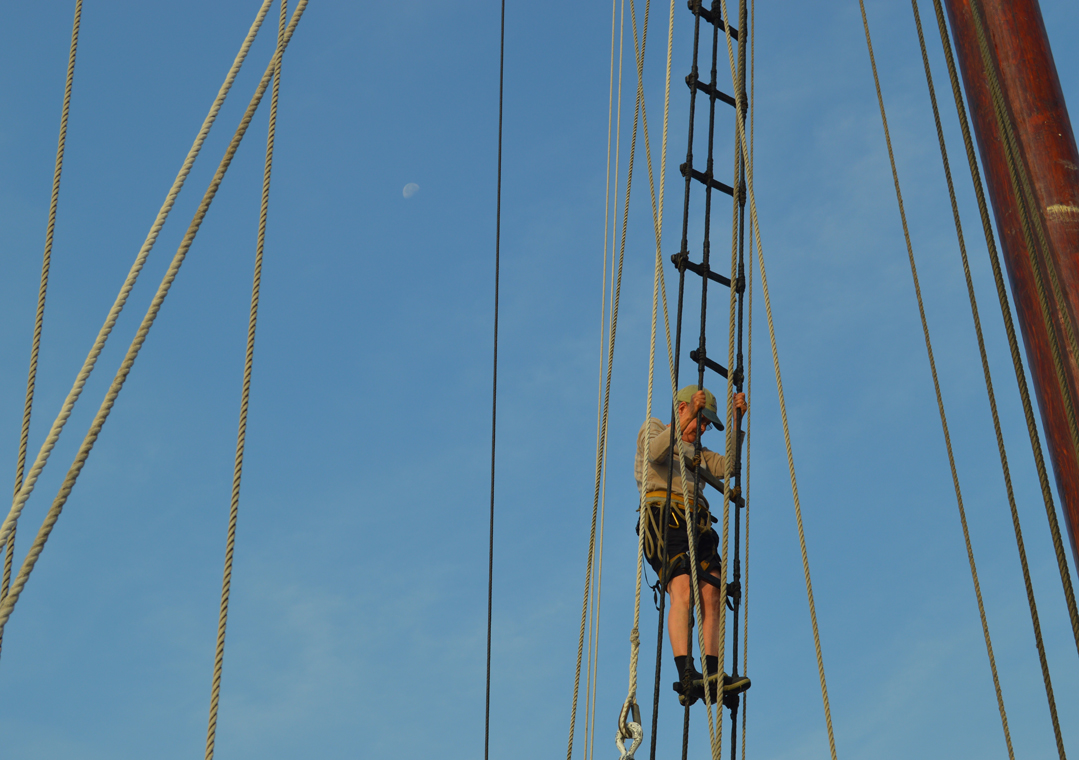 Local Lore: Acting on questionable motives, a Maine harbormaster by the name of Harry Goodridge “adopted” an orphaned seal pup from the waters near Robinson Rock in 1961. He named him Andre and for the next 25 years, the seal was his constant companion. Andre also became a coastal Maine celebrity, performing tricks for delighted summer visitors to the coast. Andre “wintered” in either the New England or Mystic Aquarium, and in the spring, he would swim, unaccompanied, back to Rockport Harbor, where a granite statue dedicated in his honor in 1978 still stands.
Local Lore: Acting on questionable motives, a Maine harbormaster by the name of Harry Goodridge “adopted” an orphaned seal pup from the waters near Robinson Rock in 1961. He named him Andre and for the next 25 years, the seal was his constant companion. Andre also became a coastal Maine celebrity, performing tricks for delighted summer visitors to the coast. Andre “wintered” in either the New England or Mystic Aquarium, and in the spring, he would swim, unaccompanied, back to Rockport Harbor, where a granite statue dedicated in his honor in 1978 still stands.
What’s Green: With an itinerary dictated by the whims of the breeze and the tide, few travel excursions yield slighter carbon footprints than a voyage aboard a historic windjammer. On a six-night sail, windjammers consume an average of one gallon of fuel, per person, while each guest uses about the amount of electricity required to power a porch light for a week. Scraps are composted, water is conserved, meals are all prepared on a wood-burning stove—which also heats water for showers—and nothing is ever thrown overboard.
What’s Not Green: Sailing vessels are at the mercy of the wind, which, alas, doesn’t always blow heartily. All the windjammers in the fleet are equipped with a diesel engine, or a small yawl boat to move things along when Mother Nature doesn’t provide adequate power.
 Planet-Saving Opportunities: Inspired by a workshop Captain Brenda led several years ago, each of the association’s captains practice and educate their guests on Leave No Trace principles. Captains also consider themselves stewards to the abundance of islands punctuating Penobscot Bay. Working in partnership with organizations like the Maine Coast Heritage Trust, captains and their guests participate in coastal clean-up efforts, always striving to leave the islands more pristine than they found them.
Planet-Saving Opportunities: Inspired by a workshop Captain Brenda led several years ago, each of the association’s captains practice and educate their guests on Leave No Trace principles. Captains also consider themselves stewards to the abundance of islands punctuating Penobscot Bay. Working in partnership with organizations like the Maine Coast Heritage Trust, captains and their guests participate in coastal clean-up efforts, always striving to leave the islands more pristine than they found them.
Cost: From $200 per person a night, including meals. For more information, visit the Maine Windjammer Association’s website.
 The Magazine of The Sierra Club
The Magazine of The Sierra Club

